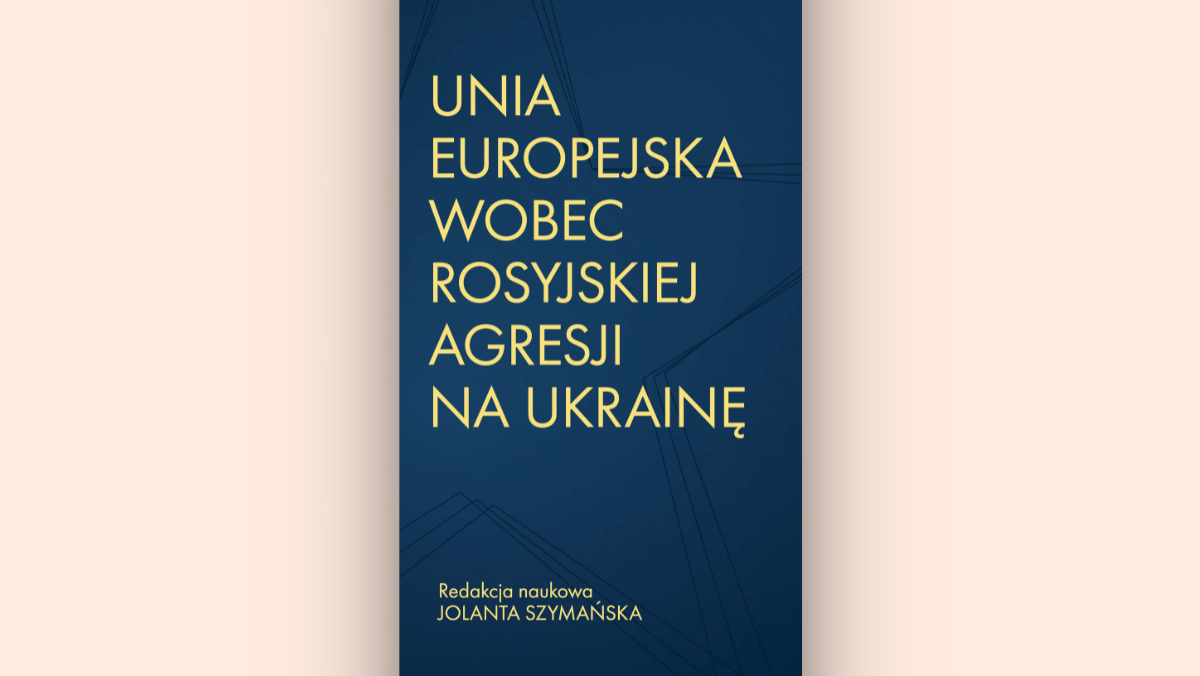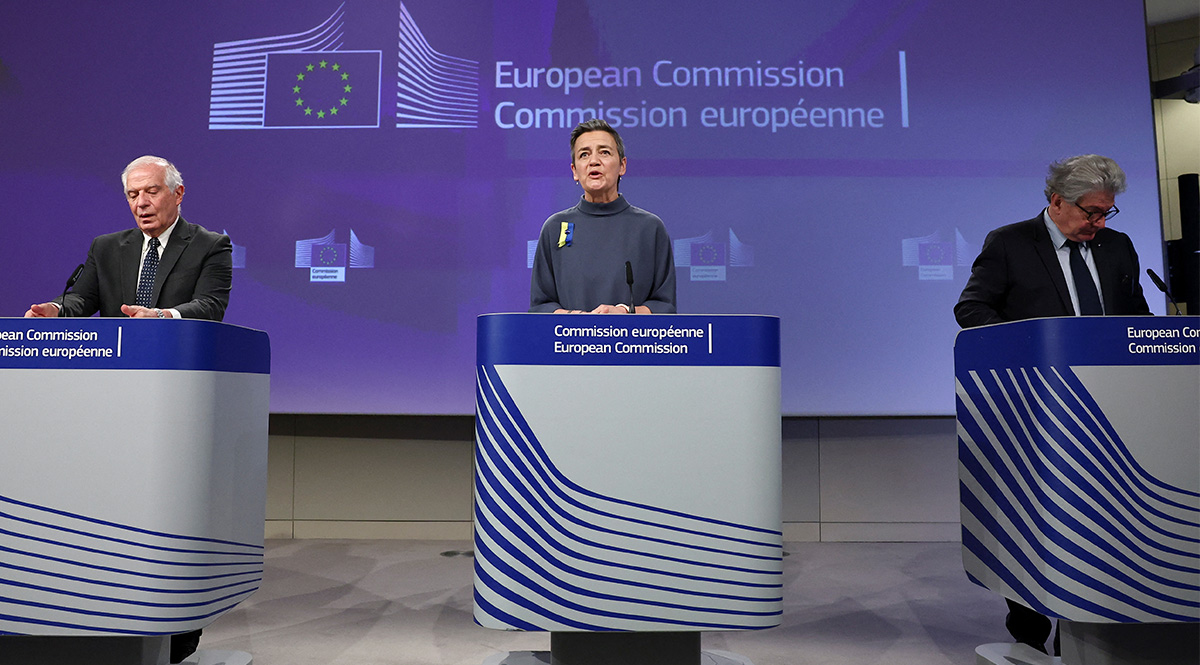War in Ukraine Boosts Europe's Defence Industry
The European Defence Industry Strategy (EDIS) is designed to increase European production capacity in the face of the long-term threat from Russia. Its implementation will take years, which is not going to increase the supply of arms and ammunition in the short term although this is crucial for the effective defence of Ukraine. However, the strategy sends a political message about the EU’s willingness to take responsibility for strengthening Europe’s defence capabilities despite Member States’ fears of limits on their own competences in this area.
 Laurel Chor / Zuma Press / Forum
Laurel Chor / Zuma Press / Forum
On 5 March, the European Commission (EC) and the High Representative of the Union published the European Defence Industry Strategy (EDIS). It is a non-binding document that sets the policy direction for changes in the EU defence industry until 2035. It was accompanied by the EC’s proposal for a new regulation—the European Defence Industry Programme (EDIP). It is designed to ensure that the assumptions of the new strategy are implemented, including through the allocation of a specific pool of funds for this purpose.
The State of the Defence Industry
Regulation of matters relating to the common market is a competence of the Union, but Art. 346 of the Treaty on the Functioning of the EU provides for exceptions to this rule for the production of and trade in arms and munitions in order to protect the security interests of Member States. Over the years, states have used this argument to limit cooperation. This has fragmented the European defence market and limited the remit of the responsible Commissioner. The target set by states in 2007 to spend 35% of their total defence expenditure in cooperation with other EU members was also not achieved. According to the data provided by the European Defence Agency (EDA), states reached only 11% in 2020 and 18% in 2022.
The development of the EU defence industry has also been hampered by the belief in most states that war in Europe was unlikely. As a result, the European defence technological and industrial base (EDTIB) remained underfunded for years, leading to a reduction in domestic capabilities to produce arms and ammunition. In addition, EDA data show that since 2007 countries have spent more than 60% of their annual defence procurement expenditure on arms purchases outside the EU, even in cases where equivalent European-made equipment was available. This has led to such a collapse of the domestic arms sector that it is unable to meet the demand for arms and ammunition in the wake of the war in Ukraine, even after increased procurement spending by EU states.
Assumptions of the New Strategy
The priority of EDIS is to ensure defence preparedness in the face of the Russian threat by enhancing the innovativeness, competitiveness, and resilience of the EDTIB. This should be achieved through increased joint investments and improved security of supply chains. Given the state of the European defence industry, the criteria for countries to meet by 2030 are high. They require that: 1) at least 40% of military equipment procurement should be carried out in cooperation between states in the EU, 2) the value of trade in military equipment in the Union should represent at least 35% of the value of the EU defence market, and 3) at least 50% of spending from national defence budgets should be spent on procurement in the EU (rising to 60% by 2035). Such redirection of states’ investments is expected to improve the condition of domestic industry in the long term, increase the availability of European-made military equipment and ammunition, and reduce dependence on third countries.
The breakthrough idea behind EDIS is to involve Ukraine in defence cooperation before it joins the EU. Ukraine would be able to participate in joint procurement, cooperate with EU defence companies, and benefit from EDIS financial assistance. To facilitate cooperation, the strategy foresees the organisation of an EU-Ukraine Defence Industry Forum by the end of this year. The EU will also open an Innovation Office in Kyiv to use the Ukrainian side’s current battlefield experience to work on improving European technologies.
Growing Challenges
The protracted war in Ukraine will require further increased investment in the defence industry. Although the EDIP foresees an additional €1.5 billion by the end of the current budget perspective in 2027, this amount is insufficient given current needs. It is also unclear under what conditions the Ukrainian partners will be supported. The EDIP foresees separate funding for Ukraine’s defence technological and industrial base under the Ukraine Support Instrument, but does not specify the amount of funding. Development of the defence industry could be facilitated by a more flexible lending policy of the banking sector, in particular the European Investment Bank, covering all defence production and not only dual-use products. So far, however, there is no idea how to encourage the banks to make such a change, beyond emphasising the benefits for the development of the internal market, of which the EDTIB is a part. The current situation also demands that states further mobilise their efforts, and the strategy calls on them to invest more in both the new EDIP and the existing European Peace Facility (EPF), including through debt.
EU countries will also need concrete incentives to encourage them to deepen their cooperation. EDIS foresees new mechanisms to remove formal barriers to the functioning of the defence market and to increase the benefits of cooperation. These include the establishment of a Defence Industrial Readiness Board to prioritise and coordinate procurement at the EU level and the creation of a pilot European Military Sales Mechanism (similar to the U.S. Foreign Military Sales) to increase the visibility of products available on the EU market. On a smaller scale, there is a Fund to Accelerate Defence Supply Chain Transformation (FAST), which aims to improve access to financing for small and medium-sized enterprises, and a Structure for European Armament Programme (SEAP), which aims to increase the financial and legal benefits for groups of countries cooperating in the field of defence, such as in PESCO. However, the strategy lacks solutions for the expansion of production lines and the acquisition of personnel, which remain key to improving the readiness of the EU defence sector.
Conclusions
The implementation of EDIS is intended to ensure that the European defence industry moves from crisis response to permanent readiness. In fact, the scale of the war in Ukraine has overwhelmed the capabilities of the European defence sector in the short term. It was unable to expand production lines in time and is still facing problems, as well as a shortage of skilled personnel. As a result, the Union has failed to meet its commitment to supply 1 million rounds of ammunition in one year to Ukraine, and the lack of availability of military equipment has led some countries to place orders outside Europe. While EDIS is designed to encourage EU members to support domestic production, the current challenges still require flexible and rapid solutions, also taking into account cooperation with global partners. This includes not only replenishing military equipment stocks of EU states but also further creative procurement of ammunition for Ukraine, such as the purchase of 800,000 rounds proposed by the Czech President in February this year.
The publication of EDIS also brings an increased role for the EU in creating strategic responsibility for security in Europe. A symbolic change would be the appointment of a new Commissioner for Defence Industry in the next European Commission term. However, some Member States are reluctant to accept such proposals, mainly because of differing perceptions of their interests and the need to protect their own defence companies. On the other hand, countries such as Poland will spend a large part of their expenditure in the coming years on implementing the arms purchase agreements they have concluded with non-EU countries such as the U.S. and South Korea after 2022. As a result, it is likely that EU states’ commitment to increasing defence cooperation will remain insufficient and that the targets set in EDIS will not be met by 2030. Some states also continue to underestimate the threat posed by Russia to the EU, while failing to properly assess their political, social and military costs if Ukraine is not adequately supplied with arms and ammunition, and if Russian aggression continues.





